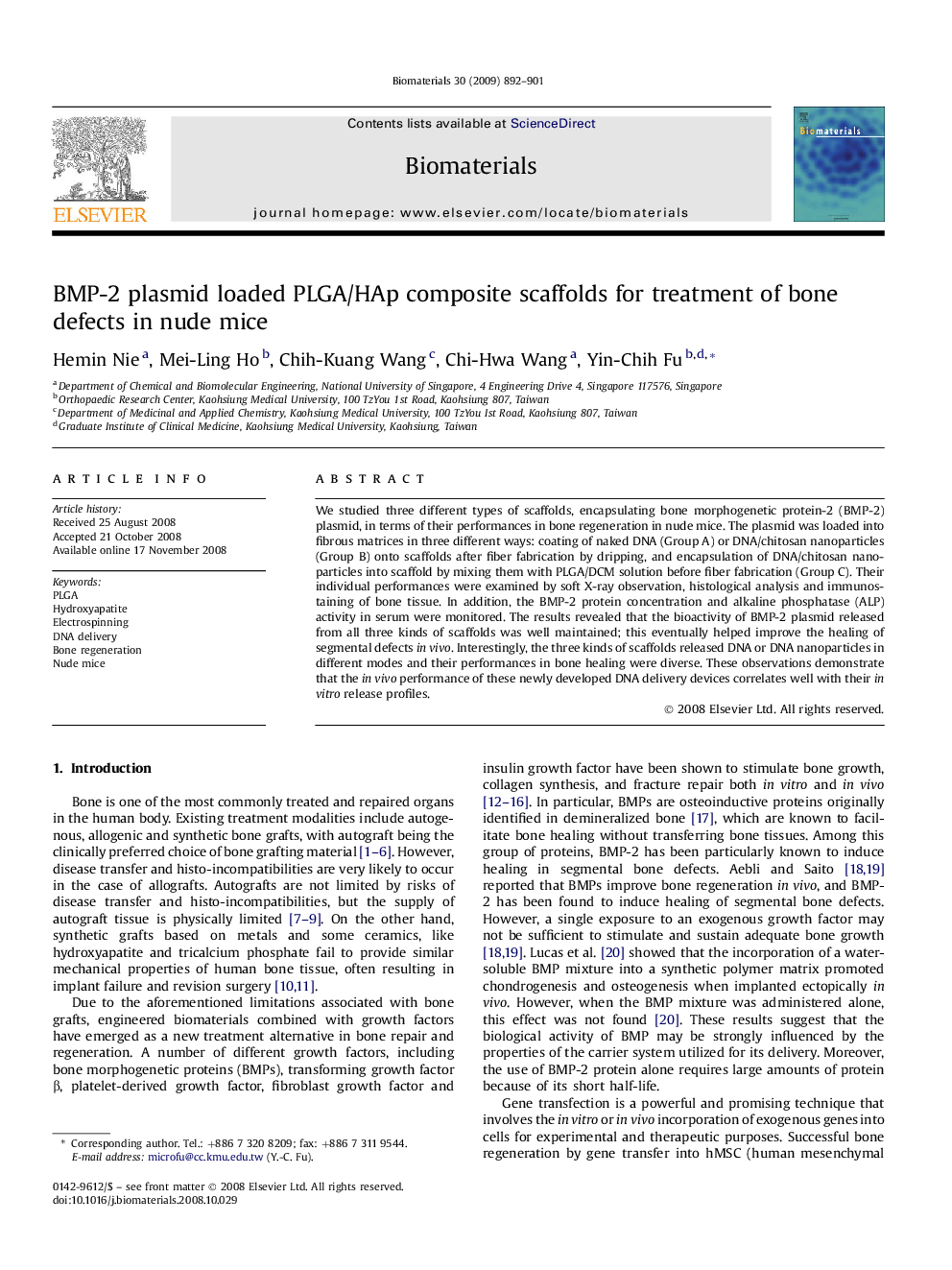| Article ID | Journal | Published Year | Pages | File Type |
|---|---|---|---|---|
| 9434 | Biomaterials | 2009 | 10 Pages |
We studied three different types of scaffolds, encapsulating bone morphogenetic protein-2 (BMP-2) plasmid, in terms of their performances in bone regeneration in nude mice. The plasmid was loaded into fibrous matrices in three different ways: coating of naked DNA (Group A) or DNA/chitosan nanoparticles (Group B) onto scaffolds after fiber fabrication by dripping, and encapsulation of DNA/chitosan nanoparticles into scaffold by mixing them with PLGA/DCM solution before fiber fabrication (Group C). Their individual performances were examined by soft X-ray observation, histological analysis and immunostaining of bone tissue. In addition, the BMP-2 protein concentration and alkaline phosphatase (ALP) activity in serum were monitored. The results revealed that the bioactivity of BMP-2 plasmid released from all three kinds of scaffolds was well maintained; this eventually helped improve the healing of segmental defects in vivo. Interestingly, the three kinds of scaffolds released DNA or DNA nanoparticles in different modes and their performances in bone healing were diverse. These observations demonstrate that the in vivo performance of these newly developed DNA delivery devices correlates well with their in vitro release profiles.
